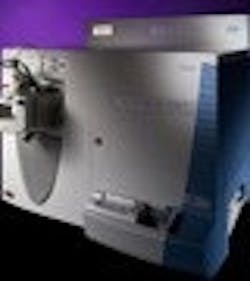As interest in follow-on biologics or biosimilars (see "Follow-on Biologics: Friend or Foe?") increases, there is a growing need for analytical technologies that will be able to distinguish between different protein states. A number of research groups around the world are developing analytical techniques that can do this.
Pharmaceutical Manufacturing asked Bristol-Myers Squibb senior scientist Declan Moran, who is involved in such a program at the Center for Bioanalytical Sciences at Dublin City University (Pharmaceutical Manufacturing, September 2006, p. 26) for his views on commercially available bioanalytical technologies and their potential ability to analyze follow-on biologics.
He suggests that todays tools provide part, but not all, of the picture. At this point, he says, there is no single method that would be capable of establishing comparability. Shaping up to be among the most important analytical technologies are orthogonal solutions and hyphenated MS technologies, although Moran notes that NMR is still needed to confirm protein configuration.
In addition, wet techniques such as isoelectric focalization (IEF) and SDS-PAGE (sodium dodecyl sulfate polyacrylamide gel electrophoresis) are necessary, since these are still best at separating isoforms, he says. In general, the key instrumentation required to better understand protein structure include:
- MS- TOF, Q-TOF, 3Q
- Array sequencing (SPR [Surface Plasmon Resonance] or Lectin Ab-specific)
- qPCR
- IEF SDS-PAGE
- Any platform that enhances signals and improves the sensitivity of optical or acoustic methods; fluorescence is becoming more important.
Some of these technologies were on display at the recent Pittsburgh Conference on Analytical Chemistry and Applied Spectroscopy in Chicago. Following are a few examples.
High-Definition Mass Spectrometry
The Synapt High Definition Mass Spectroscopy or HDMS system, introduced last December, combines ion mobility and high-performance mass spectroscopy, performing MS functions but also allowing molecules to be distinguished based on mass, size and shape. The instrument can be used in small molecule research, but can also be used as part of orthogonal analytics, in protein characterization, to distinguish specific protein folding an ability that would be important in characterizing tomorrows biogenerics and comparing them to their name-brand counterparts. Researchers at Oxford Universitys chemistry department and Max Planck Institute are using the system.
Waters Corp., www.waters.com
Linear Ion Trap MS with Electron Transfer Dissociation
The LTQ XL combines linear ion trap MS with Electron Transfer Dissociation (ETD) technology. ETD is a new fragmentation technique that is said to significantly improve protein characterization, post-translational modification (PTM) analysis and top-down or middle-down sequencing of proteins and peptides. Thermo Scientific describes the LTQ XL as the only mass spectrometer that offers multiple dissociation techniques, Pulsed Q Dissociation (PQD), ETD and CID.
We believe ETD performed on a linear ion trap [will enable] researchers to pinpoint, identify and fully characterize more post-transitional modifications such as phosphorylation and glycosylation than ever before, said Greg Herrema, president of Scientific Instruments at Thermo Fisher Scientific.
Thermo Fisher Scientific, www.thermo.com
Surface Plasmon Resonance (SPR)
Biacore C is designed for quantitative and qualitative analysis of biomolecules, combining the advantage of Biacores label-free Surface Plasmon Resonance (SPR) technology with advanced instrumentation reducing sample usage and a design-validated system for enhanced data security. The SPR-based system provides high-quality, real-time data, meeting the highest demands for precision, accuracy and reproducibility.
GE Healthcare, Inc., www.biacore.com
Lectin Arrays/Monitoring Glycosylation
The GlycoScope platform enables the monitoring of glycosylation during the entire life cycle of a glycosylated therapeutic protein. Its developers say that using the GlycoScope platform during the development and manufacturing of generic biopharmaceutical products (biogenerics/ biosimilars) offers substantial value, offering potential reduction in product development and clinical costs, as well as time to market.
Procognia, Inc., www.procognia.com
Outsource Protein Characterization
This company can recommend and implement the most appropriate protein purification strategy for a generation of assay reagents and standards with a close attention to yield, purity and activity. Preparative chromatographic platforms are available in both FPLC and HPLC formats. The company is experienced with biomolecule purification, and says it can guarantee the highest purity.
Institute for Bioanalytics, www.iba-analytics.com






